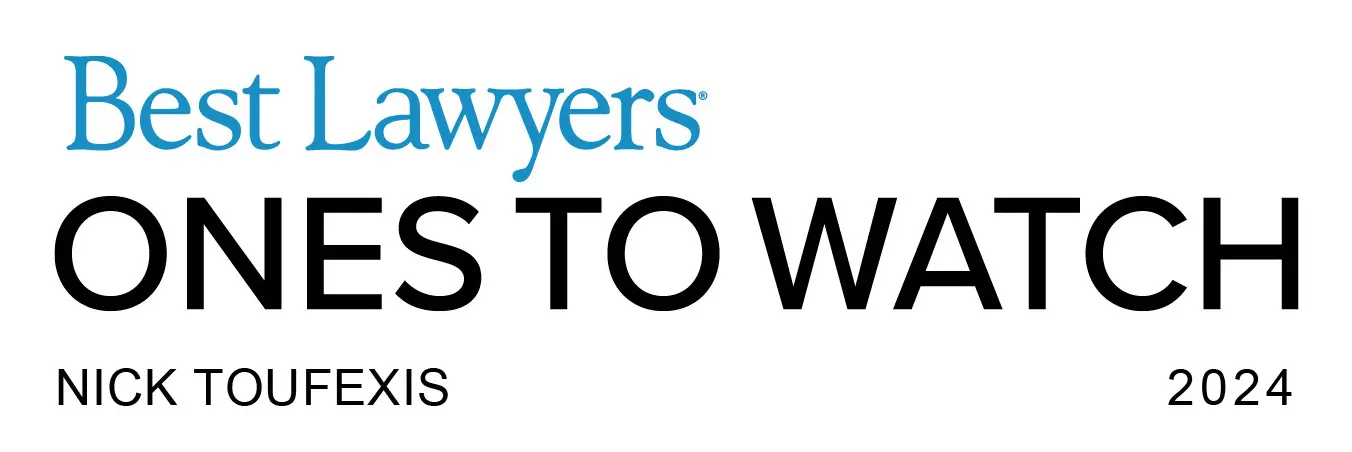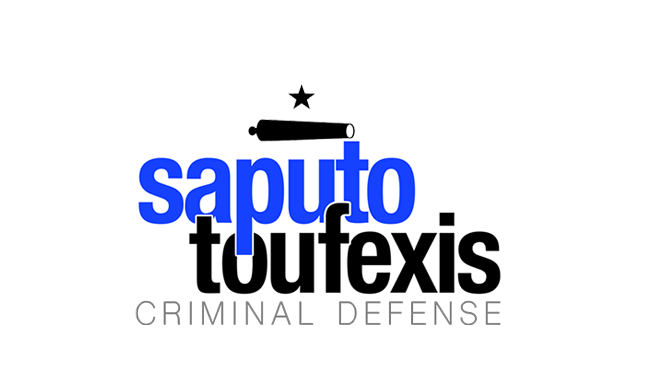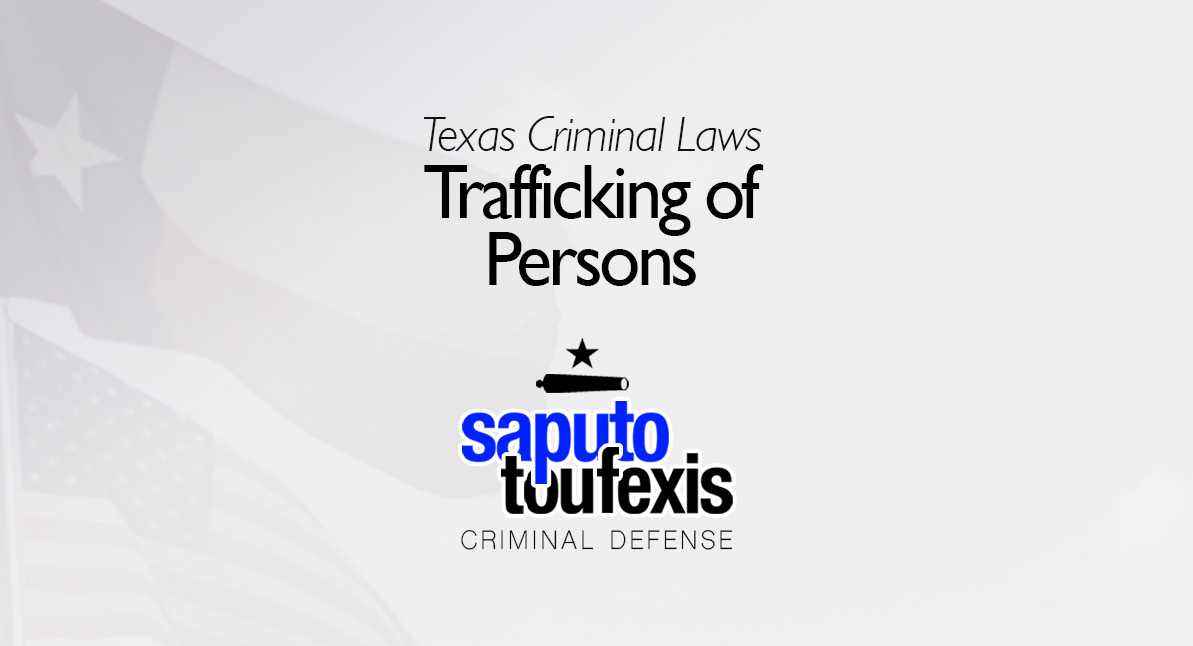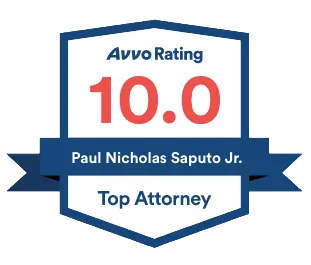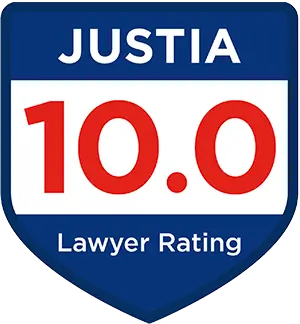The Texas Trafficking of Persons law gives police the right to arrest you if they believe you participated in, or received benefits related to the provision of, certain activities related to the provision of forced labor, pimping, prostitution, and sexual exploitation of children.
FAQs about the
Trafficking of Persons law in Texas
- What is the current Texas law about Trafficking of Persons?
- How can I be charged with a Trafficking of Persons offense in Texas?
- What is the statute of limitation for Trafficking of Persons in Texas?
- What is the penalty for a Texas Trafficking of Persons offense?
- Can you get probation for Trafficking of Persons in Texas?
- Do I have to register as a sex offender in Texas if guilty of Trafficking of Persons?
- What level of crime is Trafficking of Persons in Texas?
The Trafficking of Persons offense in Texas is the law that prohibits illicit human trafficking. This trafficking law prohibits both trafficking in and receiving benefits from certain prohibited trafficking activities, including forced labor, sex trade activities, and sexually exploiting children. Since 2015, the Texas legislature has passed many laws related to human trafficking and amended the Trafficking of Persons several times.
Have you been charged with Trafficking of Persons? Contact us today to discuss legal representation.
or Text or Call (888) 239-9305
The legislature amended the Trafficking of Persons offense in 2019, 2021 and again in 2023. The most recent changes added “disabled” individuals to the offenses that used to only apply to children and created additional punishment level enhancements.
Human trafficking, for the purposes of the Trafficking of Persons law, includes sex trafficking. And if you’re in any way involved, you can be charged with sex trafficking in Texas. This includes people who do the trafficking, anyone who benefits from the trafficking, and anyone using the victims for labor, sexual gratification, or any other purpose. In many cases, prosecutors will bring sex trafficking charges along with other types of sex crimes, such as Solicitation of Prostitution, Promotion of Prostitution, Online Promotion of Prostitution, Aggravated Online Promotion of Prostitution, Aggravated Promotion of Prostitution, Compelling Prostitution.
The state may also seek an indictment for Continuous Trafficking of Persons if they believe you engaged in human trafficking on two or more occasions.
The Penal Code classifies the Texas Trafficking of Persons law under Title 5 “Offenses Against The Person,” Chapter 20A “Trafficking Of Persons.” Learn more about the Texas offense of Trafficking of Persons below.
What is the current Texas law about Trafficking of Persons?
The Trafficking of Persons offense is described in Section 20A.02 of the Texas Penal Code. Section 20A.02 of the Texas Penal Code is below (with bracketed language indicating the 2019 amendments that apply to offenses committed on or after September 1, 2019):[1]
(a) A person commits an offense if the person knowingly:
(1) traffics another person with the intent that the trafficked person engage in forced labor or services;
(2) receives a benefit from participating in a venture that involves an activity described by Subdivision (1), including by receiving labor or services the person knows are forced labor or services;
(3) traffics another person and, through force, fraud, or coercion, causes the trafficked person to engage in conduct prohibited by:
(A) Section 43.02 (Prostitution);
(B) Section 43.03 (Promotion of Prostitution);
[(B-1) Section 43.031 (Online Promotion of Prostitution)]
(C) Section 43.04 (Aggravated Promotion of Prostitution);
[(C-1) Section 43.041 (Aggravated Online Promotion of Prostitution); or]
(D) Section 43.05 (Compelling Prostitution);
(4) receives a benefit from participating in a venture that involves an activity described by Subdivision (3) or engages in sexual conduct with a person trafficked in the manner described in Subdivision (3);
(5) traffics a child or disabled individual with the intent that the trafficked child or disabled individual engage in forced labor or services;
(6) receives a benefit from participating in a venture that involves an activity described by Subdivision (5), including by receiving labor or services the person knows are forced labor or services;
(7) traffics a child or disabled individual and by any means causes the trafficked child or disabled individual to engage in, or become the victim of, conduct prohibited by:
(A) Section 21.02 (Continuous Sexual Abuse of Young Child or Children);
(B) Section 21.11 (Indecency with a Child);
(C) Section 22.011 (Sexual Assault);
(D) Section 22.021 (Aggravated Sexual Assault);
(E) Section 43.02 (Prostitution);
(E-1) Section 43.021 (Solicitation of Prostitution);
(F) Section 43.03 (Promotion of Prostitution);
[(F-1) Section 43.031 (Online Promotion of Prostitution);]
(G) Section 43.04 (Aggravated Promotion of Prostitution);
[(G-1) Section 43.041 (Aggravated Online Promotion of Prostitution);]
(H) Section 43.05 (Compelling Prostitution);
(I) Section 43.25 (Sexual Performance by a Child);
(J) Section 43.251 (Employment Harmful to Children); or
(K) Section 43.26 (Possession or Promotion of Child Pornography); or
(8) receives a benefit from participating in a venture that involves an activity described by Subdivision (7) or engages in sexual conduct with a child or disabled individual trafficked in the manner described in Subdivision (7).
The definition of Coercion
Coercion was defined by the 85th Texas Legislature in 2017, and codified in Section 20A.01.[2] This definition of coercion was replaced with a new one by the 86th Texas Legislature in 2019,[3] and then finally replaced again by the 87th Legislature in 2021 as follows:[4]
(1-a) “Coercion” as defined by Section 1.07 includes:
(A) destroying, concealing, confiscating, or withholding from a trafficked person, or threatening to destroy, conceal, confiscate, or withhold from a trafficked person, the person’s actual or purported:
(i) government records; or
(ii) identifying information or documents;
(B) causing a trafficked person, without the person’s consent, to become intoxicated, as defined by Section 49.01, to a degree that impairs the person’s ability to appraise the nature of or resist engaging in any conduct, including performing or providing labor or services; or
C) withholding alcohol or a controlled substance to a degree that impairs the ability of a trafficked person with a chemical dependency, as defined by Section 462.001, Health and Safety Code, to appraise the nature of or resist engaging in any conduct, including performing or providing labor or services.
The 2019 legislative changes
Effective in 2019, the 86th Texas Legislature added Online Promotion of Prostitution and Aggravated Online Promotion of Prostitution to the subsection (a)(7) list of offenses in which causing a child to engage in, or be a victim of, as a result of trafficking, is prohibited under this law. [5]
The 2021 legislative changes
Effective in 2021, the 87th Texas Legislature added Solicitation of Prostitution to the subsection (a)(7) list of offenses in which causing a child to engage in, or be a victim of, as a result of trafficking, is prohibited under this law.[6] Under the 2023 amendments, this updated subsection (a)(7) now applies to disabled individuals as well.
The 2023 legislative changes
In 2023, the 88th Texas Legislature added “disabled individuals” to subsections (5), (7) and (8) of Section 20A.02, making it illegal to traffic disabled individuals in the instances it would also be illegal to traffic children.[7] The 88th Legislature also created some additional enhancements.
How can I be charged with a Trafficking of Persons offense in Texas?
You can be charged with Trafficking of Persons in Texas if the state’s attorneys believe that each of the elements of any of subsections (1)-(8) of 20A.02(a), as described in the section above, have been met.
Trafficking of Persons convictions require only the uncorroborated testimony of a single party to the offense.[8]
What is the statute of limitation for Trafficking of Persons in Texas?
The Code of Criminal Procedure contains two special limitations period provisions related to this offense. The limitations period for trafficking a child is twenty years from the 18th birthday of the victim of any offenses committed under subsections (a)(5) or (a)(6).[9] The limitations period for trafficking a disabled individual under subsections (a)(5) or (a)(6) is ten years from the date the offense was discovered.
What is the penalty for a Texas Trafficking of Persons offense?
A conviction for Trafficking of Persons is punished by default as a felony of the second degree,[10] with a maximum possible fine of up to $10,000 and prison time of up to 20 years.
However, a conviction be enhanced to a first degree felony if “(1) the applicable conduct constitutes an offense under Subsection (a)(5), (6), (7), or (8), regardless of whether the actor knows the age of the child at the time the actor commits the offense;” or “(2) the commission of the offense results in serious bodily injury to or the death of the person who is trafficked.” [11]
Enhancements enacted in 2017
As of 2017, the offense can also be enhanced to a first degree felony if the commission of the offense results in the death of an unborn child of the person who is trafficked.[12]
Enhancements enacted in 2023
In 2023, the Texas legislature passed two new laws that create additional enhancements for certain Trafficking of Persons convictions.
One of these new enhancements applies when “the actor: (A) used or exhibited a deadly weapon during the commission of the offense; (B) intentionally, knowingly, or recklessly impeded the normal breathing or circulation of the blood of the trafficked person by applying pressure to the person’s throat or neck or by blocking the person’s nose or mouth; or (C) recruited, enticed, or obtained the trafficked person from a shelter or facility operating as a residential treatment center that serves runaway youth, foster children, the homeless, or persons subjected to human trafficking, domestic violence, or sexual assault.”[13]
Another enhancement passed by the legislature in 2023 creates a “supermax” penalty, requiring a minimum prison sentence of 25 years, for Trafficking of Persons offenses that occurred near a school or other youth facility.[14]
Can you get probation for Trafficking of Persons in Texas?
The Texas Code of Criminal Procedure prohibits judges from granting deferred adjudication probation.[15] The Code also prohibits juries from recommending probation for people convicted of this offense.[16] The Texas Code of Criminal Procedure prohibits judges from placing people convicted of this offense on straight probation as well.[17]
Do I have to register as a sex offender in Texas if guilty of Trafficking of Persons?
Trafficking of Persons is an offense that requires registration as a sex offender in Texas only under certain circumstances – only convictions based on subsections (a)(3), (4), (7), or (8) of the law require registration.[18]
What level of crime is Trafficking of Persons in Texas?
The Penal Code classifies the punishment for Trafficking of Persons as either a first or second degree felony, depending on the circumstances, with a potential minimum 25 year prison sentence.
Learn more about the penalty range for this offense in the section above.
Legal References:
^1. Texas Penal Code §20A.02(a)^2. HB 2529, 85th Legislature (RS), Section 1, effective September 1, 2017^3. The 86th Texas Legislature changed the definition of coercion for offenses occurring on or after September 1, 2019 in SB 1802, 86th Texas Legislature, Section 2, effective September 1, 2019. The 2019 definition was as follows:
(a-1) For purposes of Subsection (a)(3), “coercion” as defined by Section 1.07 includes:
(1) destroying, concealing, confiscating, or withholding from a trafficked person, or threatening to destroy, conceal, confiscate, or withhold from a trafficked person, the person’s actual or purported:
(A) government records; or
(B) identifying information or documents;
(2) causing a trafficked person, without the person’s consent, to become intoxicated, as defined by Section 49.01, to a degree that impairs the person’s ability to appraise the nature of the prohibited conduct or to resist engaging in that conduct; or
(3) withholding alcohol or a controlled substance to a degree that impairs the ability of a trafficked person with a chemical dependency, as defined by Section 462.001, Health and Safety Code, to appraise the nature of the prohibited conduct or to resist engaging in that conduct.
^4. Texas Penal Code §20A.02(a-1), as enacted by by HB 1540, 87th Legislature (RS), Sections 21 & 62, effective September 1, 2021^5. SB 20, 86th Texas Legislature, Section 3.11, effective September 1, 2019^6. HB 1540, 87th Texas Legislature, Section 22, effective September 1, 2021^7. SB 1527, 88th Texas Legislature, Sections 2.01 and 2.02, effective September 1, 2023^8. Texas Penal Code §20A.04(c)^9. Code of Criminal Procedure 12.01(6)(A)^10. Texas Penal Code §20A.02(b)^11. Texas Penal Code §20A.02(b)(1)&(2)^12 Texas Penal Code §20A.02(b)(3), enacted by HB 2552, 85th Texas Legislature (RS), Section 15^13. Texas Penal Code §20A.02(b)(4), as enacted by HB 1527, 88th Texas Legislature (RS), Section 2.02^14. Texas Penal Code §20A.02(b-1), enacted by HB 3554, 88th Texas Legislature (RS), Section 1^15. Art. 42A.102(b)(1)(A), Texas Code of Criminal Procedure.^16. Art. 42A.056(6), Texas Code of Criminal Procedure^17. Art. 42A.054(a)(5), Texas Code of Criminal Procedure^18. Code of Criminal Procedure, Article 62.001(5)(K)

